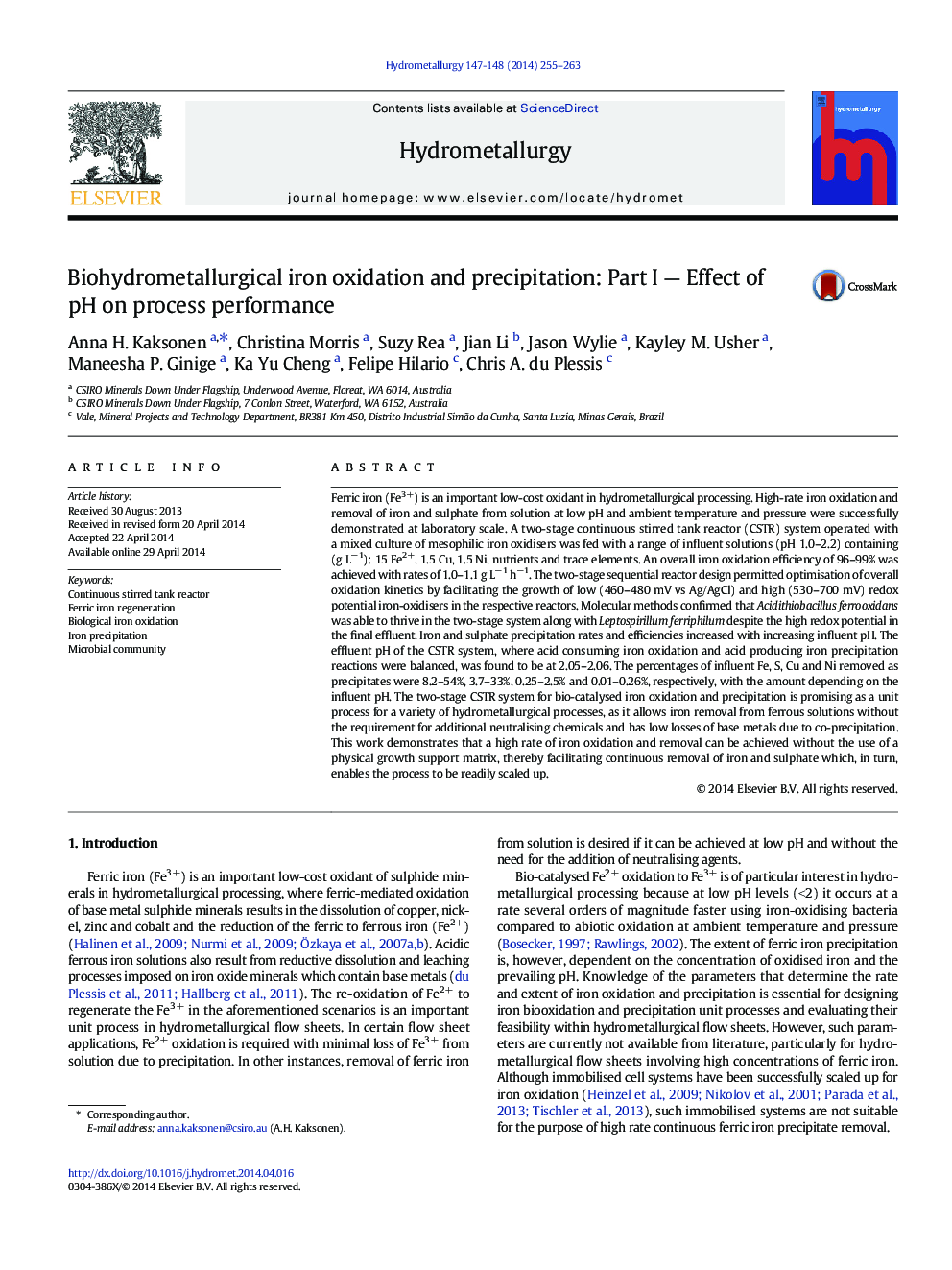| کد مقاله | کد نشریه | سال انتشار | مقاله انگلیسی | نسخه تمام متن |
|---|---|---|---|---|
| 212119 | 462033 | 2014 | 9 صفحه PDF | دانلود رایگان |

• Two-stage bioreactor facilitated optimisation of iron oxidation kinetics.
• Iron precipitation increased with increasing influent pH.
• Acid consuming and producing reactions were balanced at effluent pH 2.05–2.06.
• Cu and Ni losses via co-precipitation were low at lower influent pH values.
• Absence of growth support matrix allowed continuous removal of precipitates.
Ferric iron (Fe3+) is an important low-cost oxidant in hydrometallurgical processing. High-rate iron oxidation and removal of iron and sulphate from solution at low pH and ambient temperature and pressure were successfully demonstrated at laboratory scale. A two-stage continuous stirred tank reactor (CSTR) system operated with a mixed culture of mesophilic iron oxidisers was fed with a range of influent solutions (pH 1.0–2.2) containing (g L−1): 15 Fe2+, 1.5 Cu, 1.5 Ni, nutrients and trace elements. An overall iron oxidation efficiency of 96–99% was achieved with rates of 1.0–1.1 g L−1 h−1. The two-stage sequential reactor design permitted optimisation of overall oxidation kinetics by facilitating the growth of low (460–480 mV vs Ag/AgCl) and high (530–700 mV) redox potential iron-oxidisers in the respective reactors. Molecular methods confirmed that Acidithiobacillus ferrooxidans was able to thrive in the two-stage system along with Leptospirillum ferriphilum despite the high redox potential in the final effluent. Iron and sulphate precipitation rates and efficiencies increased with increasing influent pH. The effluent pH of the CSTR system, where acid consuming iron oxidation and acid producing iron precipitation reactions were balanced, was found to be at 2.05–2.06. The percentages of influent Fe, S, Cu and Ni removed as precipitates were 8.2–54%, 3.7–33%, 0.25–2.5% and 0.01–0.26%, respectively, with the amount depending on the influent pH. The two-stage CSTR system for bio-catalysed iron oxidation and precipitation is promising as a unit process for a variety of hydrometallurgical processes, as it allows iron removal from ferrous solutions without the requirement for additional neutralising chemicals and has low losses of base metals due to co-precipitation. This work demonstrates that a high rate of iron oxidation and removal can be achieved without the use of a physical growth support matrix, thereby facilitating continuous removal of iron and sulphate which, in turn, enables the process to be readily scaled up.
Journal: Hydrometallurgy - Volumes 147–148, August 2014, Pages 255–263